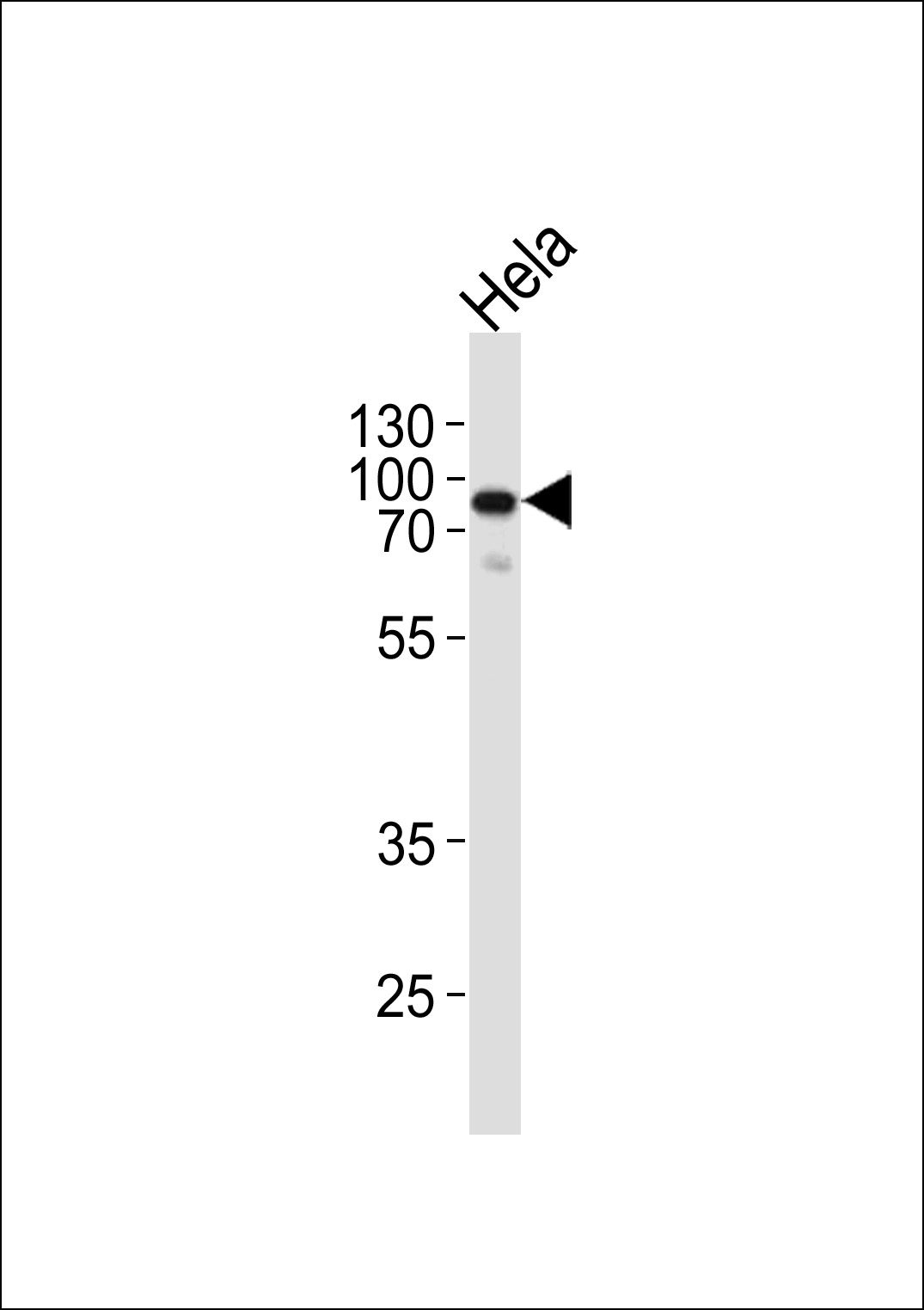产品名称
EWSR1 Rabbit Polyclonal Antibody (C-term)
别名
RNA-binding protein EWS, EWS oncogene, Ewing sarcoma breakpoint region 1 protein, EWSR1, EWS
存储缓冲液
Purified polyclonal antibody supplied in PBS with 0.09% (W/V) New type preservative N. This antibody is purified through a protein A column, followed by peptide affinity purification.
Human Gene ID
NP_001156757.1;NP_001156758.1;NP_001156759.1;NP_005234.1;NP_053733.2
Human Swissprot No.
Q01844
特异性
This EWSR1 antibody is generated from rabbits immunized with a KLH conjugated synthetic peptide between 623-652 amino acids from the C-terminal region of human EWSR1.
稀释度
WB~~1:1000;IF~~1:10~50
运输及保存条件
Maintain refrigerated at 2-8°C for up to 2 weeks. For long term storage store at -20°C in small aliquots to prevent freeze-thaw cycles.
背景介绍
This gene encodes a multifunctional protein that is
involved in various cellular processes, including gene expression,
cell signaling, and RNA processing and transport. The protein
includes an N-terminal transcriptional activation domain and a
C-terminal RNA-binding domain. Chromosomal translocations between
this gene and various genes encoding transcription factors result
in the production of chimeric proteins that are involved in
tumorigenesis. These chimeric proteins usually consist of the
N-terminal transcriptional activation domain of this protein fused
to the C-terminal DNA-binding domain of the transcription factor
protein. Mutations in this gene, specifically a t(11;22)(q24;q12)
translocation, are known to cause Ewing sarcoma as well as
neuroectodermal and various other tumors. Alternative splicing of
this gene results in multiple transcript variants. Related
pseudogenes have been identified on chromosomes 1 and 14. [provided
by RefSeq].
细胞定位
Nucleus. Cytoplasm. Cell membrane. Note=Relocates from cytoplasm to ribosomes upon PTK2B/FAK2 activation
功能
Might normally function as a transcriptional repressor. EWS- fusion-proteins (EFPS) may play a role in the tumorigenic process. They may disturb gene expression by mimicking, or interfering with the normal function of CTD-POLII within the transcription initiation complex. They may also contribute to an aberrant activation of the fusion protein target genes.


